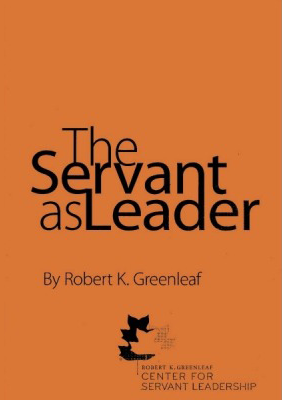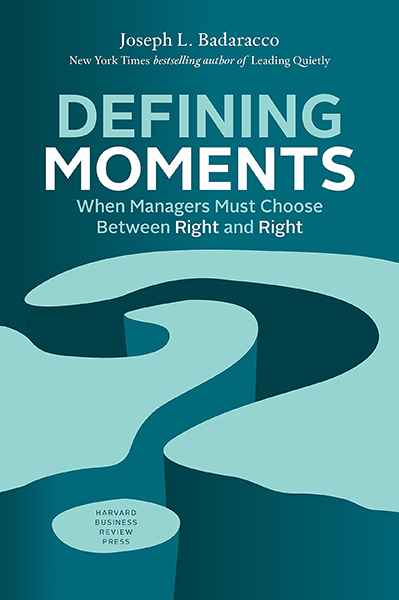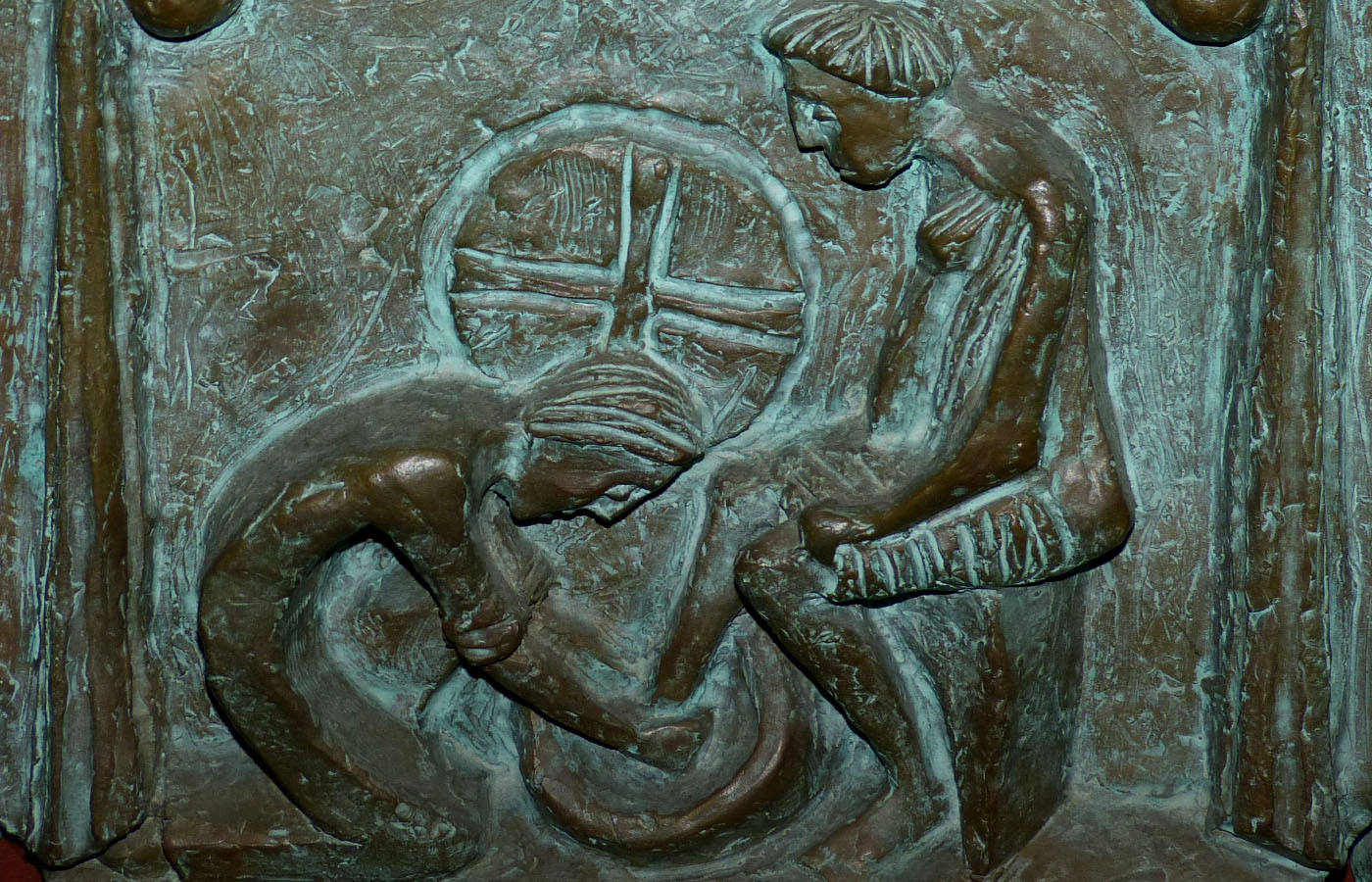Servant-leadership is a paradox, an oxymoron. It is the controversial fusion of seeming opposites—a servant and a leader—that produces the leader par excellence. In this global 21st century, mission leaders and workers are not simply addressing linear situations but complex dilemmas.[1] Servant-leadership is the timeless universal leadership model to address the issues of this complex century.
Servant-leadership is the timeless universal leadership model to address the issues of this complex century.
The servant-leader
Exemplified by Jesus, the term servant-leader was coined by Robert Greenleaf in his 1970 seminal work, The Servant as Leader, in which he fused the two extreme types of ‘the leader-first and the servant-first’.[2] Greenleaf was inspired by the menial servant Leo in Herman Hesse’s novel, The Journey to the East, who contrarily insists that ‘he who wishes to live long must serve, but he who wishes to rule does not live long.’[3] Servant-leaders are cross-boundary in their DNA. They do not choose between opposing values. Instead, they combine mutually repelling values to become the great leader identified in Good to Great as ‘a paradoxical blend of personal humility and professional will’.[4] This 21st global century requires leaders to have the essential cross-cultural competence to reconcile polarized values.[5]

The Servant as Leader by Robert Greenleaf
Joseph Badaracco in Defining Moments notes that today’s leaders are confronted with ‘what to do when one clear right thing must be left undone in order to do another or when doing the right thing requires doing something wrong?’[6] Reconciling dilemmas allows servant-leaders to create the best out of wrong-versus-wrong and right-versus-right. This article shows how Jesus exemplifies the paradigmatic servant-leadership qualities described by culture experts Fons Trompenaars and Ed Voerman in Servant-Leadership Across Cultures.[7]
Trompenaars and Voerman employ three symbols to illustrate servant-leadership:
![]() 1. Servant-leadership pivots on the hyphen because the servant and leader on both sides of the hyphen are equally important. Servant-leadership is a compound leadership whereby the sum is greater than the parts.
1. Servant-leadership pivots on the hyphen because the servant and leader on both sides of the hyphen are equally important. Servant-leadership is a compound leadership whereby the sum is greater than the parts.
![]() 2. It is a two-way circle on which anyone can start on any point in either direction. Some leaders start with a desire to serve, others to lead. Every leader begins with his or her strength and then adds other characteristics.
2. It is a two-way circle on which anyone can start on any point in either direction. Some leaders start with a desire to serve, others to lead. Every leader begins with his or her strength and then adds other characteristics.
![]() 3. Although many leaders describe servant-leadership as an inverted pyramid, this changing world needs a rotating pyramid because some situations require the serving part of leadership, while others the decisive part.
3. Although many leaders describe servant-leadership as an inverted pyramid, this changing world needs a rotating pyramid because some situations require the serving part of leadership, while others the decisive part.

Defining Moments by Joseph Badaracco
Universal and timeless
Everyone can become a servant-leader. There is a starting place for each person on the circular continuum to go in either direction. The famed American football coach, Vince Lombardi, commented, ‘Leaders are made, they are not born. They are made by hard effort, which is the price which all of us must pay to achieve any goal that is worthwhile.’[8]
Moreover, servant-leaders are from every culture—and effective in reaching people of every culture and religion. Servant-leadership is universal:
- It has existed in ancient cultures, all the major religions, and the philosophies of Aristotle, Socrates, and Plato.
- The landmark Culture, Leadership, and Organizations: The GLOBE Study of 62 Societies[9] confirms that servant-leadership dimensions are present in Judaism, Christianity, Islam, Buddhism, and Taoism.
- Contemporary research by Rakesh Mittal and Peter Dorfman among 59 countries also concludes that ‘servant leadership is perceived as important for effective leadership in all societies.’[10]
Everyone can become a servant-leader. There is a starting place for each person on the circular continuum to go in either direction.
Nevertheless, Randall Wallace in Servant Leadership: A Worldview Perspective notes that of the five major religions representing 82 percent of the world’s population, Christianity and Judaism are the most compatible with servant-leadership.[11] While all cultures and religions may display aspects of servant-leadership, Jesus Christ is the ultimate embodiment of a servant-leader.
Jesus, the dilemmatic servant-leader
Jesus made the greatest cultural leap in history, from heavenly divinity to earthly humanity. He seamlessly integrated the compound leadership styles of a servant-leader. Jesus was God in his essential eternal nature or morphe (Gk); and yet he took on the morphe of a doulos (Gk), a slave (Phil. 2:6-7). Jesus served on earth as a God-slave. Forever, he is both divinely enthroned above every authority (Eph. 1:21) and humbly serving all mankind.
Trompenaars and Voerman identified seven polarized binaries of servant-leadership that address all cross-cultural dilemmas. While these dimensions are not overtly spiritual, nevertheless Jesus exemplifies each of them:
Servant-leadership is neither over-achievement nor servitude.
 1. Leading versus serving
1. Leading versus serving
Servant-leadership is neither over-achievement nor servitude. In performance-oriented cultures, leaders achieve team goals and value individual successes. Their organizational structures define roles, tasks, and coordination. In contrast, ‘ascribed’ cultures draw status from birth, age, gender, wealth, and family background.
Jesus was task oriented. He said to the Father, ‘I have brought you glory on earth completing the work you gave me to do’ (John 17:4), and later declared, ‘It is finished’ (John 19:30) on the cross.
Yet he washed his disciples’ feet because he knew ‘that he had come from God and was returning to God’ (John 13:3). He had ‘equality with God’ and yet chose to empty himself of those privileges (ekenosen Gk) (Phil. 2:6,7). Jesus came from divine family background; yet he embraced his destiny to serve as prescribed by the Father.
 2. Rules versus exceptions
2. Rules versus exceptions
Some cultures value rules, codes, and standards. Other, relational, cultures emphasize exceptions, friendships, and specific circumstances instead of universal rules. Servant-leaders do not demand that their culture is the center of reality. Instead, they accept cultural differences and adapt to special circumstances.
Jesus set the universal rule without exception for righteousness, healing, and life: ‘This leads us to a fundamental truth. . . . All the evil due, by justice, to come to us came on Jesus, so that all the good due to Jesus, earned by His sinless obedience, might be made available to us.’[12]
Despite this universal rule, Jesus ministered by exception. He showed Thomas his nail marks; he redeemed Peter’s three denials by thrice asking, ‘Do you love me?’; and, he called the grieving Mary Magdalene by name at his grave. When people faltered, Jesus saw opportunities for people to grow.
 3. Parts versus the whole
3. Parts versus the whole
Servant-leaders connect individual parts with the whole. Individualistic cultures value independence, creativity, and individual welfare. For example, the Western economy is based on Adam Smith’s principle that individual profit benefits the whole society. In contrast, collectivistic cultures value group welfare, even at individual cost.
Servant-leaders encourage individuals to innovate in a team with a shared vision. In The Light Prize, Gary Oster defines the leader’s role as ‘integrating the broad abilities of ‘wild ducks’, those quirky, individualistic, highly intelligent employees who ignore corporate attempts to make them more efficient.’[13] Jesus changed the world by recruiting a handful of wild ducks: Paul the persecutor; Matthew the tax collector; Peter the unstable ‘rock’; and Mary Magdalene the prostitute. He chose unlikely individuals to change the whole:
Had He not come to save the world? . . . Surely the Son of God could have adopted a more enticing program of mass recruitment. . . . Yet in the end have only a few ragged disciples to show for His labors? . . . He had to devote Himself primarily to a few men, rather than to the masses, in order that the masses could at last be saved.’[14]
Servant-leaders combine control with passion.
 4. Control versus passion
4. Control versus passion
Servant-leaders combine control with passion. They thrive in both neutral cultures which emphasize control of emotions, thinking, and a no-nonsense and serious approach to life, and also ‘affective’ cultures which live life with passion, beauty, humor, and playfulness. Servant-leaders fuse the two approaches by showing their emotions at the right moments.
With perfect control, Jesus famously slept on a cushion during a ‘furious squall’ and ordered the storm to ‘Quiet! Be still!’ (Mark 4:35-41). Similarly, when he encountered the adulterous woman being mobbed, he calmly wrote on the ground and chided, ‘If any one of you is without sin, let him be the first to throw a stone at her’ (John 8:7). Yet when Jesus entered the Gentiles’ court where non-Jews worshipped at the temple, he overturned the tables and expelled the mercenaries. He unleashed controlled rage at those preventing the Gentiles from praying and the temple from being ‘a house of prayer for all nations’ (Mark 11:15-17).
 5. Specific versus diffuse
5. Specific versus diffuse
Specific cultures prefer facts, numbers, and measurables. However, in diffused cultures, the broad context supersedes the parts. Diffuse cultures value empathy and developing a relationship before doing business. Once accepted, friends are friends in every area of life.
Jesus ministered in a diffused manner when he included his disciples doing ‘the will of my Father’ as ‘my brother and sister and mother’ (Matt. 12:50). Once a relationship is made, strangers become family. Yet Jesus insisted, ‘not the smallest letter, not the least stroke of a pen’ will disappear until the law is accomplished (Matt. 5:18). He was meticulous when the situation demanded. He initiated ‘moments of truth’ by providing people with what they needed at the moment they needed it. To address the tax dilemma, he provided a fish with exactly the four drachma needed to cover the taxes (Matt. 17:24-27). He preserved the relationship with the exact provision at just the right moment.
 6. Short-term versus Long-term
6. Short-term versus Long-term
Some cultures have a short-term horizon and others a long one. A servant-leader casts vision for the grand design; fulfills daily assignments; and develops emergent strategies by garnering input. Jesus unveiled the grand design of his impending crucifixion, resurrection, and even the end-time events. Yet, he changed his plan to minister only to the Jews when the Canaanite woman pleaded with him to heal her daughter. In every culture, the servant-leader listens, gathers information, consults advisers, and makes a resolute decision.
A servant-leader integrates hindsight, insight, and foresight because different cultures have a different emphasis on the past, present, and future. Past-oriented cultures see the future repeating previous experiences, elderly wisdom, and collective memory. Present-oriented cultures focus on executing daily tasks, and future-oriented cultures strategize for the future. Jesus is the Alpha and the Omega. He exhorts us to pray for today’s bread and not worry about tomorrow. Yet, he warns us to keep watch ‘because the Son of Man will come at an hour when you do not expect him’ (Matt. 24:44).
Servant-leaders are both internally inspired and externally motivated by the environment.
 7. Push versus pull
7. Push versus pull
Servant-leaders are both internally inspired and externally motivated by the environment. They can navigate ‘push cultures’ whereby inner principles determine behaviors and decisions. These leaders have strong will power. They value talk before listening, and initiative before caution. In contrast, leaders in ‘pull cultures’ draw external wisdom and strength from nature and social relations. They listen and adapt with caution and modesty.
Jesus was internally driven. He knew what was in the hearts of men. Yet, he constantly responded to external demands, especially pleas for healing. He stopped where he was going and responded ‘I will’ to their external requests.
Conclusion
At the Last Supper, Jesus established a new hyperculture that transcended all cultures by exhorting us, ‘Now that I, your Lord and Teacher, have washed your feet, you also should wash one another’s feet’ (John 13:14). That evening, he commanded us to love one another, not simply as we love ourselves, but as he loves us. It is unfathomable, but it is the transcendent culture of servant-leadership.
Endnotes
- Editor’s Note: See article by Mary Ho, entitled, ‘Global Leadership for Global Mission: How mission leaders can become world-class global leaders’, in November 2016 issue of Lausanne Global Analysis https://lausanne.org/content/lga/2016-11/global-leadership-for-global-mission.
- R. Greenleaf, The Servant as Leader (Westfield: The Greenleaf Center for Servant Leadership, 2008).
- H. Hesse, Journey to the East (Mansfield Centre: Martino, 2011).
- J. Collins, Good to Great (New York: HarperCollins, 2001).
- Editor’s Note: See article by Scott Moreau, entitled, ‘Becoming a Healthy Multi-Cultural Team: How to Reach the ‘Effective Synergy’ Phase’, in March 2019 issue of Lausanne Global Analysis https://lausanne.org/content/lga/2019-03/becoming-a-healthy-multi-cultural-team.
- J. Badaracco, Defining Moments: When Managers Must Choose between Right and Right (Boston: Harvard, 1997).
- F. Trompenaars and E. Voerman, Servant-Leadership across Cultures: Harnessing the Strengths of the World’s Most Powerful Management Philosophy (New York: McGraw-Hill, 2010).
- Quoted in M. Hackman and C. Johnson, Leadership: A Communication Perspective (Long Grove: Waveland Press, 2009), 73.
- R. House, P. Hanges, M. Javidan, and P. Dorfman, Culture, Leadership and Organizations: The GLOBE Study of 62 Societies (Thousand Oaks: Sage, 2004).
- R. Mittal and P. Dorfman, ‘Servant Leadership across Cultures’, Journal of World Business 47, 2012.
- R. Wallace, ‘Servant Leadership: A Worldview Perspective’, International Journal of Leadership Studies, vol. 2, no. 2, Regent University, 2007.
- D. Prince, Bought with Blood: The Divine Exchange at the Cross (Grand Rapids: Chosen, 2000).
- G. Oster, The Light Prize: Perspectives on Christian Innovation (Virginia Beach: Gary Oster, 2011).
- Robert Coleman, ‘The Master Plan of Evangelism,’ Perspectives on the World Christian Movement, eds. Ralph Winter and Steven Hawthorne (Pasadena: William Carey Library, 2009).

